The Olmec were a society of villagers that lived along the Gulf Coast of Mexico. These people were mostly known for the special statues they carved out of stone, often weighing around 20 tons each. These stone heads were carved to commemorate their rulers, and are still well preserved today.
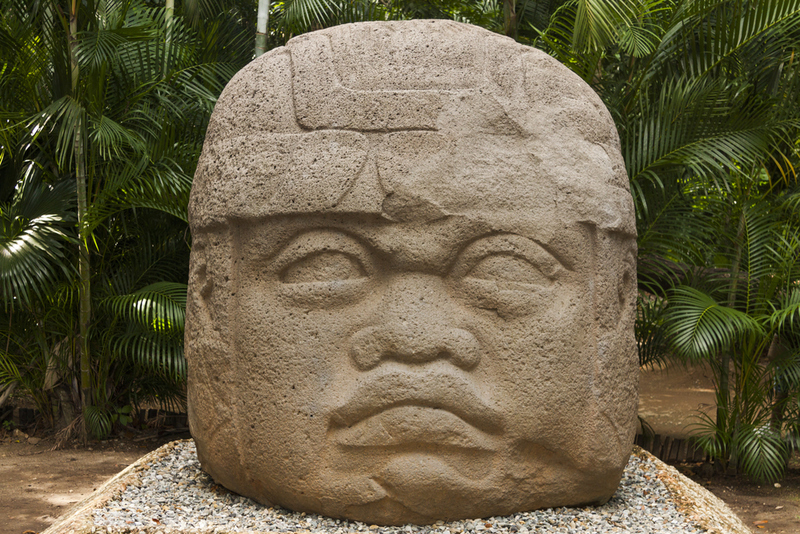
The boulders were brought by the Olmecs from the Sierra de los Tuxtlas mountains in Veracruz. The heads they sculpted out of them were arranged in lines at important Olmec locations. Like many archaeological mysteries, it remains unknown just how they managed to move these massive boulders from one place to another.
The Tomb of Emperor Wen of Han
Who was this Emperor called Wen of Han, you ask, and why was he important? Well, he's a well-known figure in Chinese history. He reigned from 180 BC to 157 BC, and it is said that during his reign, China enjoyed both peace and prosperity. Now, no one really knew where he was buried.

But, researchers learned that a tomb they discovered back in 2006 belongs to no other than Emperor Wen himself. His tomb contained over 1000 small statues as well as bronze, iron, and pottery relics. This finding sealed the deal, and now researchers know where all Western Han emperors were buried.
How the Curia Pompeia Was Established
Curia Pompeia? What's that? Isn't that the name of some Paco Rabanne fragrance? Well, no. It used to be the place where Roman senators would meet during the times of the Roman Republic. While we don't know exactly when it was built, researchers believe that during the time of the Roman general Pompey the Great.

But, only recently, it was discovered that this amazing site was actually built during three different time periods. Firstly during the period of Pompey in 55 BC. Then, around 19 BC, during the time of Augustus. And finally, around the early medieval period. How cool is that?
This Is the Earliest Proof of Maize Being Used
You probably haven't spent too much time thinking about Maize. Unless you are an aficionado of polenta or popcorn, that is. But maybe you should have thought about it a little more since this domesticated cereal grain pretty much rules our lives.

Recently, a new study found the earliest evidence of this grain being a dietary staple. Basically, about 5600 years ago, migrants from South America brought with them unique types of corn, and these, in turn, were used to help sustain the ancient Maya civilization. How was discovery actually made? The dental remains of the new migrants were analyzed! That's so cool.
The Origins of the Avars Warriors Confirmed
Around 1500 years ago, after the Western Roman Empire collapsed, there was a group of warriors in Europe called The Avars. Not to be confused with Avatars, the people we're talking about here did not come from a different planet nor can they bend the elements to their will. This group was ultimately overpowered in the 8th century, and although we've always known how they were defeated, their origins were unclear.

But, lately, we learned that they most likely came to Europe from Mongolia. This was confirmed using the DNA of an Avar warrior's remains. It's amazing what we can learn and confirm by using DNA.
These Bronze Age Daggers
How much of your time do you spend thinking about daggers? Probably not much, but not the same can be said of the researchers who have been studying copper-alloy daggers. While they knew these were common during the Bronze Age in Europe, they were not sure what they were actually used for.

After all, there is so much that a human can do with a sharp object — hunt, slice, chop, shave — you name it! After developing a new method of extraction of organic residues, the researchers got their answer. The daggers were used as butchering knives, helping Bronze Age people turn livestock into delicious dishes.
These Baths that Belonged to Herod the Great
Does Herod the Great need an introduction? Well, just in case you're rushing to Wikipedia, let's give you a quick one. He was the king of Judea right around the time that Jesus was born. The king was wildly known for his love of luxury, and honestly, we can't blame him. He had himself calcite-alabaster baths, which were believed to have been brought to him from Egypt.
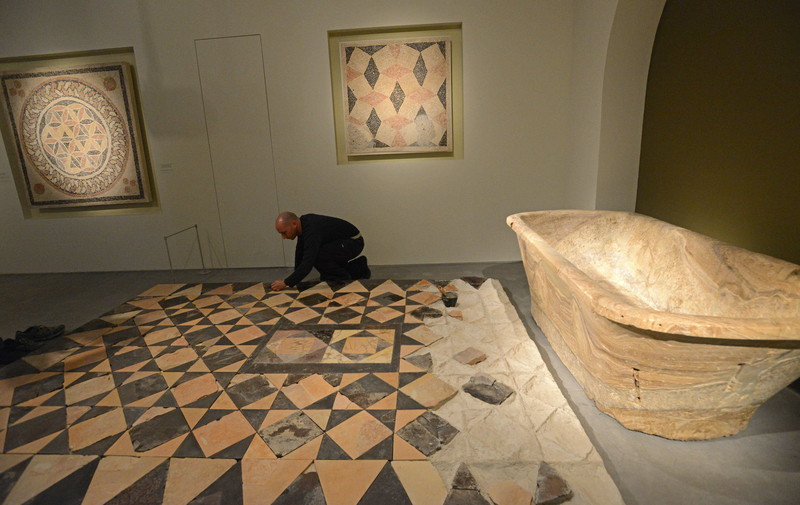
In 2022 it was discovered that the calcite-alabaster actually originated in the Te’omim cave in Israel. This means that there was probably a booming calcite-alabaster industry in Judea during the time of the first century BC.
This Mayan Tooth With Gemstones
Wait, what? Gemstones in teeth? And here we were thinking that the dental grills were a modern-day invention! Who thought that Mayan people had so much in common with today's rappers? We certainly did not expect that. A new study sheds some light on the fact that Mayans would glue gemstones to their teeth.

Most likely, they used plant resins as adhesives for this ancient form of bling. What were these adhesives actually made out of? Samples taken from the teeth prove that they were made out of pine trees, which incredibly also had qualities that fight tooth decay. Two for one!
The People Who Were in the Volcano Eruption in Pompeii
Have you heard of the terrible and unfortunate Mt. Vesuvius eruption in 79 AD? We won't hold it against you if you didn't. We will hold it against your teacher for not teaching you, though. Sadly, many people died in that eruption, but luckily new technology has enabled us to learn more about them.

Remains of the people who were there were found in 1914 in a place called the House of the Craftsman in Pompeii. Recently scientists sequenced the genome of some of the victims, learning a ton of valuable information about people of the time and how similar there actually are to modern Italians.
This Amazing Theory About the Domestication of Chickens
What's the connection between rice and chicken? (You know, other than the obvious connection that is your dinner plate.) Apparently, scientists believe that the two were always together since the beginning of time. According to new studies, it's most likely that chickens were domesticated as long as 3,500 years ago in Southeast Asia.

They were domesticated in the rice fields, not in order to turn into chicken tenders, but in order to be grown as exotic creatures or kept as pets. Chickens and rice were spreading together across Asia and Africa, so much so that chickens were perceived as sacred.
This Anonymous God of Palmyra
When studying the ancient culture of the Syrian city of Palmyra, there has always been one anonymous god that perplexed archaeologists for decades. Finally, in 2022, there was a breakthrough in helping archaeologists learn more about the anonymous deity.

2,500 inscriptions in the language of Aramaic were found and translated. This language is linguistically close to both Hebrew and Arabic though nowadays, there are no native speakers of it. The findings mean that there is a strong chance the anonymous god was not one, but many different deities. This means the people of the Syrian city of Palmyra probably practiced a polytheistic religion.
This Lost City Was Finally Found
The idea of a lost city makes us think of Atlantis — a place submerged somewhere in an untouched corner of the ocean. But the truth is that history has its fair share of lost cities. Natounia is the name of one such lost city. This one is believed to have existed in the region of today's Iraq.

While many believed this city existed, others firmly thought it was just a myth since there was no historical evidence to support it. In 2022, an answer was finally found. A fortress called Rabana-Merquly might be part of the remains of the city.
This Is What Mayans Did With Their Dead
This might sound a bit brutal but try to remember that the process you're about to read about was done to a dead body and that it was done in a thoughtful ritual. So, when a Mayan leader died, he was not simply buried.
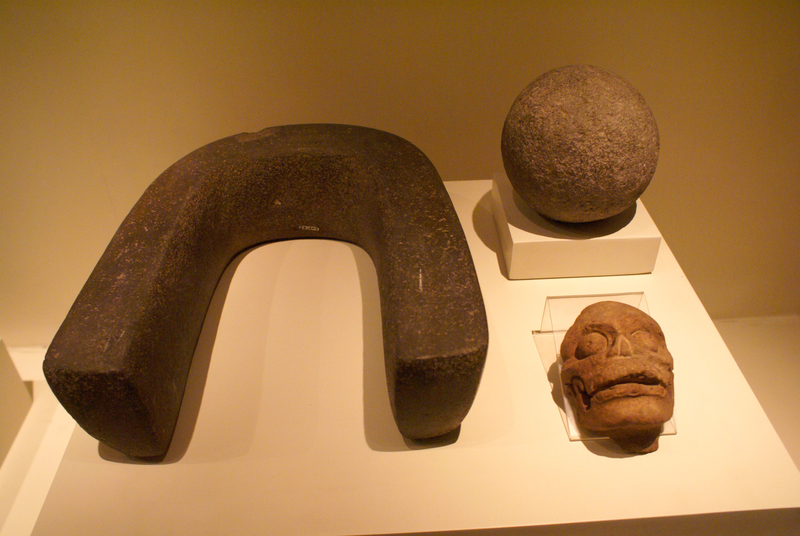
Mexican researchers have found urns that helped them understand what the Mayans did with their dead. Their remains, ashes, were mixed with plant roots, coal, and rubber to create an early version of rubber balls. They then used the balls to play a ritual game called pelota. It is believed the urns were where the balls were being created.
This Roman Lopsided Dice
Dice are not a new invention. Evidence shows that dice were used for thousands of years. Yes, unsurprisingly, humans were into gambling and games of chance for as long as they have been around. The Romans especially enjoyed playing with dice, but they made weird ones that were both asymmetrical and also biased.
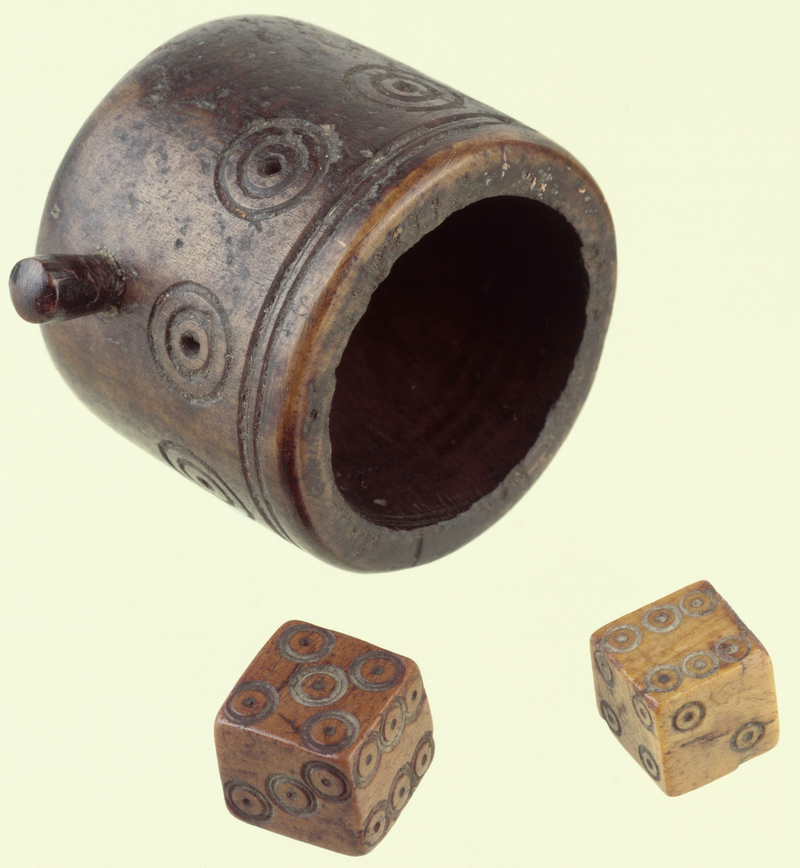
Apparently, the reason for that was that Romans thought the gods could influence the result of a die roll. They assumed that the gods would prefer the larger side, which is why they made certain sides bigger than others. So, in some kind of backward way, they were actually trying to make their dice fairer.
This New Bantus Route Discovered
Who were the Bantu peoples? They were a group of people who were all united by a group language they all spoke, called the Bantu language. They most likely existed around 2500 years ago.

At first, it was thought that they had no way of surviving in the forests of Central Africa. But a recent study proved that the Bantu people were older than anyone imagined. They most likely existed 4,000 years ago, and they actually did migrate through the rainforests of Central Africa. This should be a lesson to never doubt a person's ability to survive in their native habitat.
These Mystery Metals, Used in China in the First Millenium
The Kao Gong Ji, an old and mysterious Chinese text, one that is believed to be over 2000 years old, mentions two ingredients used to make Bronze. Except that these two ingredients have been a mystery for over 100 years. Simply called “jin” and “xi” it was unclear what they might be.

It was believed they were copper and tin, but in 2022 it was confirmed that the two ingredients were actually compounds. One was of copper, tin, and lead. The other is just copper and lead. This means that when making Bronze, the Chinese mixed alloys, not pure metals.
This Evidence of the Shift in the Minoan Civilization
Minoan-who? Let us save you some googling and tell you that they were an Aegean civilization from the Bronze Age who lived in Crete and other Aegean Islands. For years it was thought the Minoans had a huge change in shift and culture because they were invaded by the Mycenaeans.
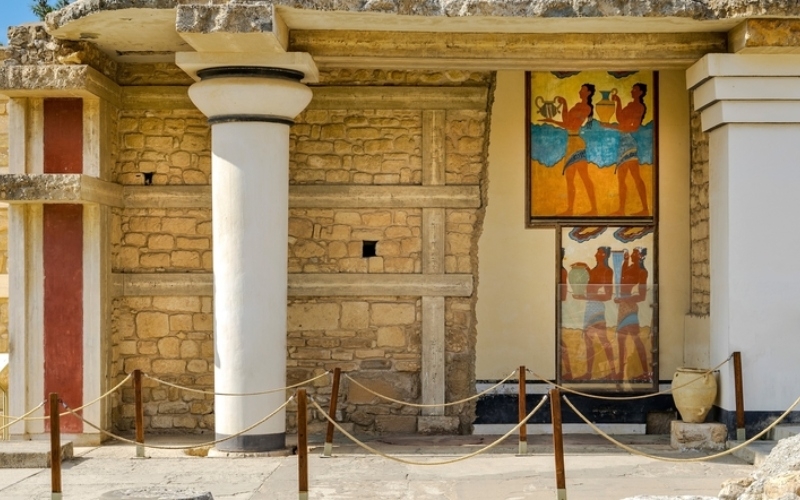
You see, 3500 years ago, the Minoans saw a big shift in culture with their language, clothes, and even economic system seeing a sudden change. But new research shows while the elite did change everything about their culture in order to fit in with the Mycenaeans, the commoners continued with their own unique traditions.
This New Information About the Pyramids
The Pyramids are still one of humanity's greatest mysteries. One example of that is the fact that they were built using incredibly heavy materials like granite and limestone during a time with no known technology that could lift or hoist those materials.

So, how did they move all those things around? Researchers found that there was a unique arm of the Nile that was used specifically in order to transport these heavy materials from place to place. The arm was called Khufu Branch, and it was located near the pyramids of Giza, Scientists believe the branch dried around 600 BC.
The World’s Oldest Complete Star Map
Have you heard of Hipparchus? He was a Greek astronomer from the 2nd century BC and he was probably the best authority on stars during his time. Think of an ancient Neil DeGrasse Tyson but Greek. People believed for a long time that he was the first person to try and make a full star map. The problem is that there was no evidence of that, only literary references alluding to that.

But finally, in 2022, a piece of his star map was found hidden under a medieval manuscript. The book was found in a Monastery in Egypt. Finally, proof!
This Evidence of a Migration That Altered Britain’s DNA
If you know anything about Britain's history, you've noticed that the Celts lived in it and ruled it for a while. But how did they get there? New evidence shows that it was anywhere between 1400 BC and 870 BC.

At that time, there was a huge migration to Britain. Actually, many of the people living there today are actually descendants of these migrants. They also changed the overall DNA of the population, introducing a gene that helps with milk digestion. So if any of you are descent from Britain and somehow not lactose intolerant, these are the people you have to thank.
The Statue of Liberty When It Was Still in Paris and Covered in Copper
We've covered the Statue of Liberty in multiple entries already, as it is one of the most important monuments in American history. This landmark is a welcome sign to all new immigrants and inspires values of freedom in everyone. It was originally built in Paris and sent as a gift to America in the late 19th century.
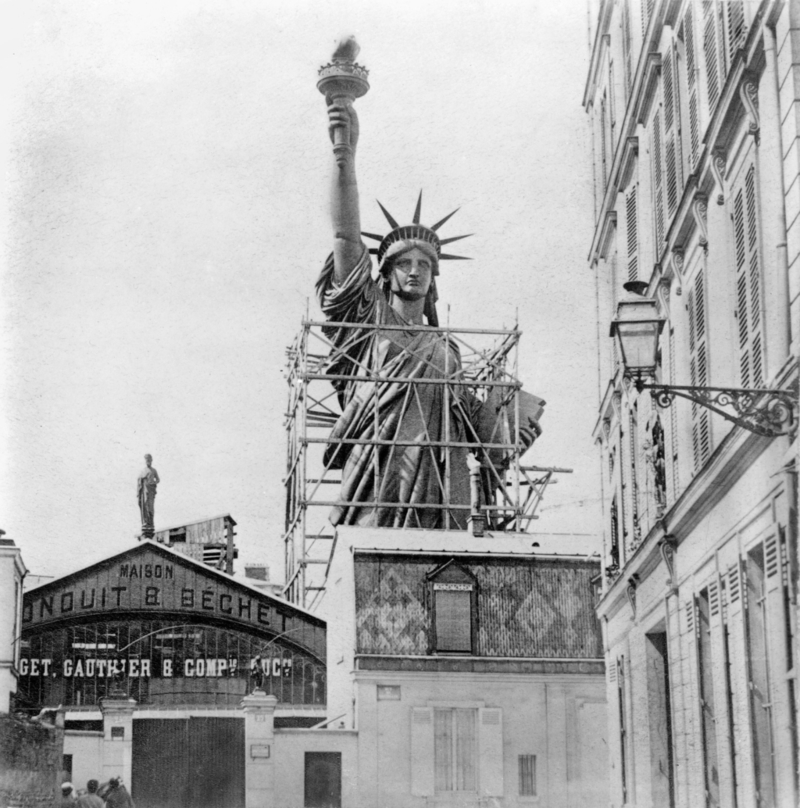
The statue can be seen here in its final form, back when it was still in Paris. Lady Liberty was originally made of copper, and this can be quite clearly seen in the picture. It has since lost its glossiness and turned green due to oxidation. It took years to construct the structure and many more years to transport and assemble it on Ellis Island.
This 1939 Vehicle Was One of the 20th Century's Most Ambitious
Duesenberg Motors Company closed its doors in 1937 after Cord's financial empire went bankrupt. However, before retiring, he had one last project to complete. The 1939 Duesenberg Coupe Simone Midnight Ghost took a full three years to complete and was entirely custom-made. It’s considered by many the most beautiful car ever made.

The Midnight Ghost was inspired by the Art Deco movement and captures the romance and grandeur of that era. It was made by American car designer Emmet-Armand and was based on the Duesenberg Type J. The car was ordered by the French cosmetics mogul Gui De LaRouche. Many believe the car was lost in World War II.
This Bat Lantern was Made in the 1930s
Up until the early 20th century, most people still believed in everything from ghosts to demons. This religious and faith-based nature made creatures such as bats a lot scarier than they are today, as they carried deep mythological significance at the time.

This hand-sculpted torch was created in honor of an older version of Halloween. It shows a bat spreading its wings and kind of looks like a Batman logo. Its torso is made to split open and light a fire inside before hanging it on a wall to illuminate a gloomy stairwell. They sure don’t make them like they used to.
This Victorian-Era Elevator from 1890
Elevators give the appearance of a recent invention, but while today’s modern elevators are indeed quite recent, the concept of using a booth to go up and down has been around for decades. Elevators have basically existed even during medieval times in a very primitive form.

The first “true” elevators were created sometime around the late 19th century, during the Victorian Era. They used steam and hydraulic systems as a way to go up and down and included beautiful architecture and designs from the period. The technology eventually progressed, as today’s elevators are almost entirely electrical. However, they have lost their artistic features along the way.
This Beautiful Axe from the late 16th Century
One of the most respected professions that has nearly disappeared from the earth is that of a blacksmith. Today’s advancements in technology make it impossible to make a living as a blacksmith unless you’re willing to learn how to monetize your work online. Blacksmiths of the old days were taught by apprenticeship and spent decades honing and mastering their craft.
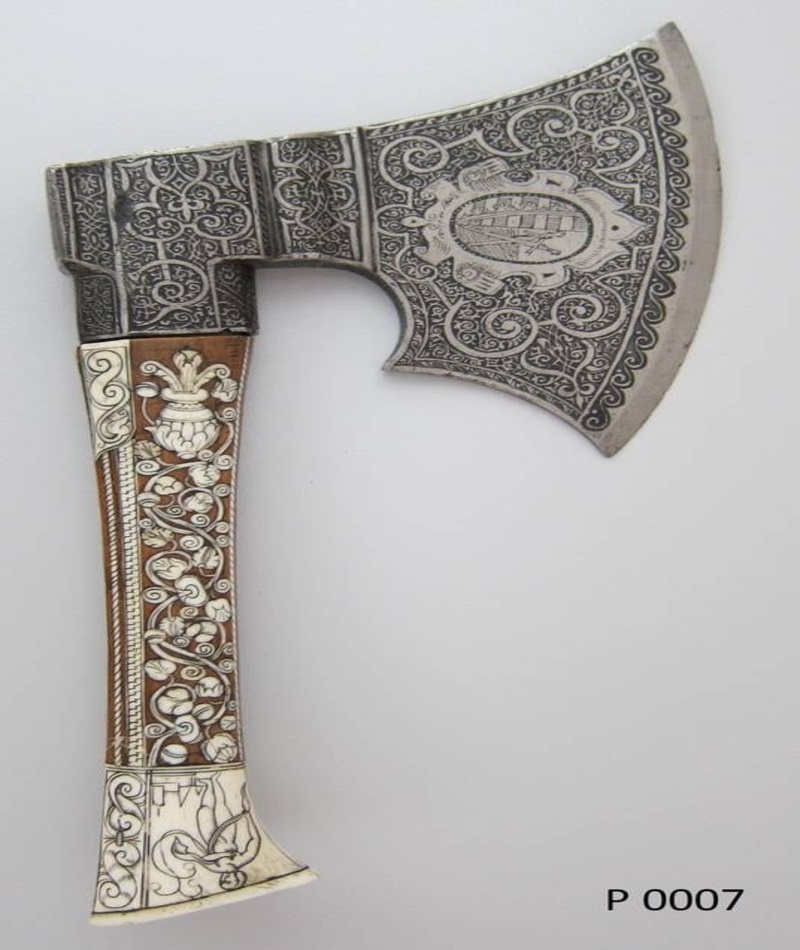
If you’re looking for an example of the kind of skill performed by blacksmiths, look no further than this 16th-century German axe. It’s quite perplexing how much time and talent went into a tool mainly used to cut down trees. This short axe is filled with beautiful carvings along its blade and flowery ornaments across its handle. It was most likely presented to a royal or socialite family to use as a weapon in battle.
This Ottoman Train
You may be familiar with the 1962 "Lawrence of Arabia" epic drama film, but what you probably don’t know is that many of the feats portrayed by the British archaeologist in the film were not just real but also understated.

One example of this relates to the time Lawrence spent toppling Ottoman trains in the Middle East. It’s believed that Lawrence and his gang managed to sabotage so many supply trains that the Ottoman Empire was left without them. However, a recent discovery shows that a handful of Turkish trains found abandoned in the middle of the desert had actually been left there by the Ottomans, who had simply left them behind to rot.
These Ancient Egyptian Sandals
Ancient Egyptians wore almost exclusively sandals in the Egyptian hot deserts. These sandals were discovered not so long ago, and they were attributed to the late King Tutankhamun, who presided over Egypt many centuries ago. It is said that King Tut would trample on his enemies wearing his sandals.

King Tut’s sandals featured incredible carvings and decorations at every which angle. If you’re ever in the market for new sandals, today you can search through eBay and get the same kind of shoes worn by King Tutankhamun. In his time, these took weeks to handcraft. To be fair, you can't bash the handiwork - they've lasted over three THOUSAND years.
The Waldsassen Abbey Library
Waldsassen Abbey is neatly hidden and tucked away in a house in Bavaria, Germany. Inside the house is one of the world's most beautiful and fantastical libraries. The abbey was originally founded in 1147 and was renovated in 1863 by a group of nuns. It features an incredible collection of books surrounded by stunning art and ornament plasters made by Karl Hofreiter.

Everything from the sculptures to the magnificent painting on the ceiling was done masterfully and represents some of the best artwork in human history. The books in this library are rare and unique, with many of them bound in pig and calfskin. You can visit Waldsassen Abbey next time you find yourself traveling to Europe, as this church and library are open to visitors.
London’s Natural History Museum
London’s Natural History Museum looks a lot like Hogwarts shifting staircases from the "Harry Potter" franchise. The place is gigantic and could take you days to explore. It holds over 80 million specimens from its five main collections, which include botany, entomology, mineralogy, paleontology, and zoology. That's a lot of ground to cover.

You can find everything from dinosaur skeletons to various stuffed wildlife in every hall, and get lost for weeks at a time exploring each specimen in detail. Amazingly enough, you can visit London’s Natural History Museum for free, which makes this a must-see destination for anyone in the vicinity.
This 1951 Studebaker Woodie Concept Car
The Studebaker Woodie was an early '50s vehicle made to revolutionize the design of cars at the time. However, it was never manufactured for mass consumption, which is a huge shame when you see how beautiful it was. The car featured a Ford Edsel V8 engine, which means it was powerful as well as great looking.

The vehicle in this picture is the prototype version of the 1951 Studebaker Woodie, which is as far as the company got in terms of actually producing the car. Nowadays, the Woodie is a rare collectible vehicle that has never driven on the road for more than a short test drive, which is why it maintains its brand-new look.
This 18th-Century Door
People were much more artistic back in the 19th century. Everything had to be made by hand, and a lot of craftsmen used this as an opportunity to create beautiful art. Even doors were often custom-made to represent beautiful historical and biblical images.

This door was created in Germany by a talented woodworker over 200 years ago. It probably took many hours to make, as it featured an incredible portrait of a young girl and her two parents. Many of these designs migrated from Germany into America during the late colonial period, as Germans migrated to the United States in droves back then.
This Stone Head is From One of the Most Ancient Civilizations on Earth
The Olmec were a society of villagers that lived along the Gulf Coast of Mexico. These people were mostly known for the special statues they carved out of stone, often weighing around 20 tons each. These stone heads were carved to commemorate their rulers, and are still well preserved today.

The boulders were brought by the Olmecs from the Sierra de los Tuxtlas mountains in Veracruz. The heads they sculpted out of them were arranged in lines at important Olmec locations. Like many archaeological mysteries, it remains unknown just how they managed to move these massive boulders from one place to another.
This Unique and Artistic Iron Rail
The Château de Chantilly is a historical location in Chantilly, France, that can be found just a few dozen miles from Paris. It was built around 1560 for Anne de Montmorency, an honorary British knight, and is currently owned by the Institut de France. The location is open to the public and contains some of the most incredible railings you'll ever see.
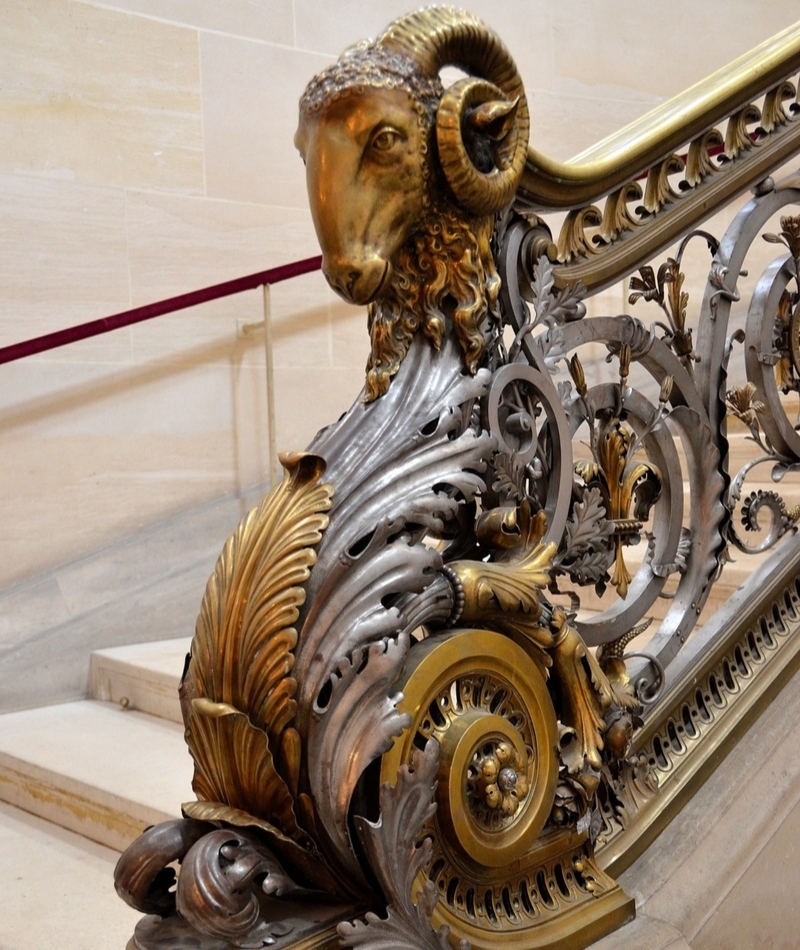
The château has hosted many famous and highly successful individuals and groups. It has recently received a complete makeover in 2008, thanks to a hefty donation from the World Monuments Fund. This picture contains just a small example of the beautiful art that’s hidden in plain sight there. If you’re even in the Paris area, make sure to give this one a visit.
This Sewing Machine from 1867
Sewing machines were originally invented by American inventor Elias Howe Jr. back in 1790. They have been one of the leading revolutionary pieces of machinery in the clothing industry and provided countless men and women with the ability to produce clothes rapidly.
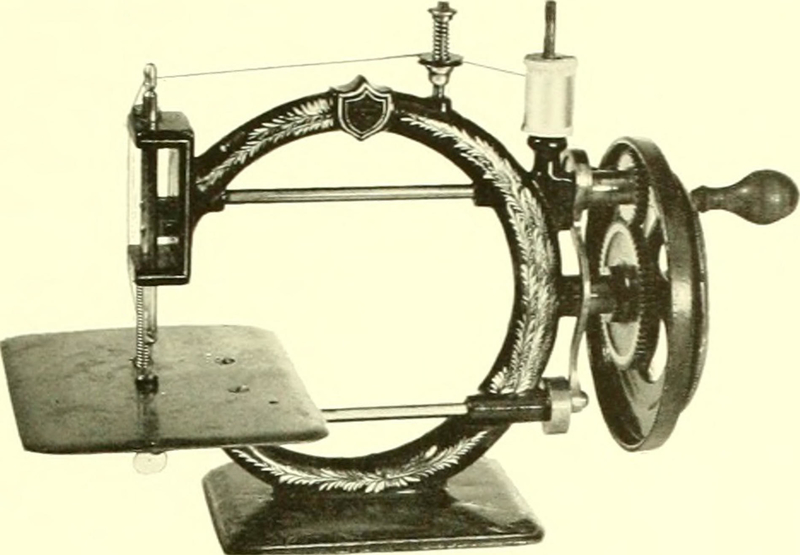
This machine is a rare remnant of the sewing machines used in the late 19th century. It uses the original mechanism devised by Elias Howe less than eighty years prior. Sewing machines have since been greatly improved. With today’s technologies, clothing only costs mere cents to produce, but back in the day, this machine allowed the greatest reduction in clothing prices ever seen.
This Abandoned Piano
In 2008, a picture was uploaded online that showed this piano with a tree coming out of it. The picture gained a lot of traction online, as people were highly confused about what they were looking at. It was found in a forest near the California State University in Monterey Bay, USA.

After much discussion and speculation online, the truth behind this strange landmark was discovered. It was found that the tree didn't actually grow through the piano but was actually there for many years before. A student named Jeff placed the piano there as an art experiment. The piano has since been destroyed, but luckily these pictures capture what a thought-provoking art piece it was.
These Ice-Cream Spoons Were Used During the Late 19th Century
Today’s favorite break-up food apparently dates back to the late 19th century. Ice cream was obviously a lot less prevalent back then and was mostly reserved for royals and socialites. It only seemed fitting that people of such high esteem would also eat using spoons that reflected their “elevated” status.
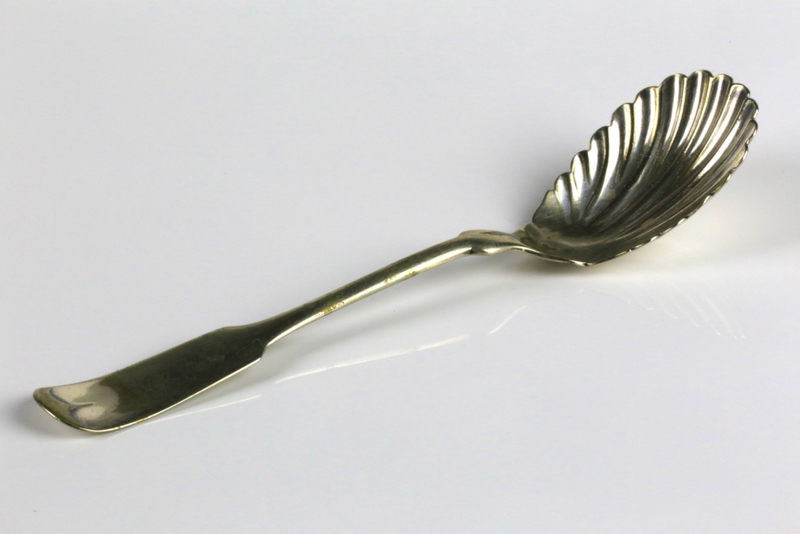
These spoons are perfectly preserved royal ice cream utensils used during the Victorian Era. They have beautiful shell carvings and were made to impress as well as delight. Think about that one friend of yours who has a beautifully designed teaspoon in the back of their silverware drawer, and try to stay on their good side. Their great-grandparents may have been royal! Or at least very wealthy.
Hasbro’s Lite-Brite Toy From the ‘60s and ‘70s
Most concepts for toys were quite simple in the 20th century; they seemed like something anybody could think of, and yet, almost no one did. Hasbro was one of the unique companies at the time that managed to design, package, and sell kids' toys in bulk and delighted millions of kids in the process.

The Lite-Brite was one of Hasbro’s most successful toys at the time and consisted of a back-lit board with pins and a bunch of colored plastic pegs. The point of the toy was to stick these pegs and assemble a low-resolution piece of art. Once the assembling was complete, you’d turn on the light and enjoy staring at your beautiful creation.
This 1947 Truck, Used to Transport Beer Around Britain
Beer was mostly transported via railroads in the 20th century, but a few beer companies changed that and opted to use roads instead. This was a great way for them to advertise their brand, which is why their trucks were so glamorous and attention-grabbing. Labatt focused on truck transportation for their beers and only stopped the practice in the ‘50s.
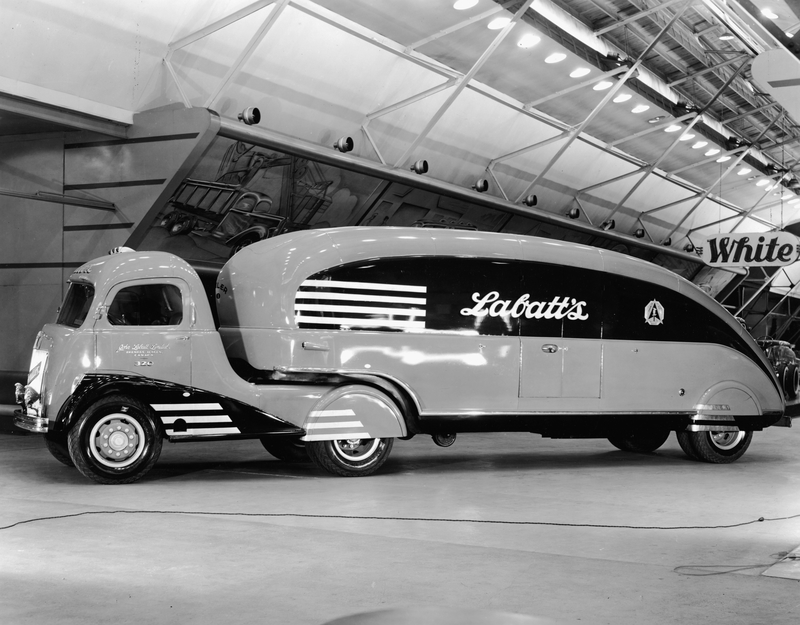
Labatt’s trucks were discovered just a few decades ago in London, Ontario, and were patched up for display. Nowadays, beer is shipped in a variety of ways. As ineffective as these trucks were, we’d sure love it if truck companies put as much love in their designs as they used to back in the day.
This Nightmare-Inducing 1930s Baby Rattle
When we look at cultural and societal differences between people and us from the early 20th century, it almost seems like they were of a different species. We often stumble upon pictures of old farmers with pitchforks and admire just how tough their lives were back then.

Many of these once-popular items now look like something straight out of a horror film, and many horror movies are actually based on these old toys. Just imagine that it was socially acceptable to give this nightmare-inducing toy to your kid back in the day. Never mind that it's a serious choking hazard, how does a child willingly take this thing!?
These Pinball Machines From the Late ‘60s
After World War II ended, arcades and bowling alleys became the place to be in America and were the growth industries of the 20th century. Almost every American would go at least once a month to one of these, as they were the quintessential meeting place for families and friends.

Manufacturers like Gottlieb began creating various pinball machines and other famous gaming stations which are still used today. Many collectors view Gottlieb’s pinball machines as the best ever made. These were much simpler times, and Americans were mostly unified, as their main focus was dedicated to preventing a nuclear war with Soviet Russia.
This Classical Keaton Typewriter
The Keaton Music Typewriter was one of the most significant inventions for annotating musical sheets. First invented and patented in 1936, this instrument had 14 keys and was sold for about $2,500 in today's money. It got a huge upgrade in 1953, as the number of keys had gone up significantly, from 14 to 33.
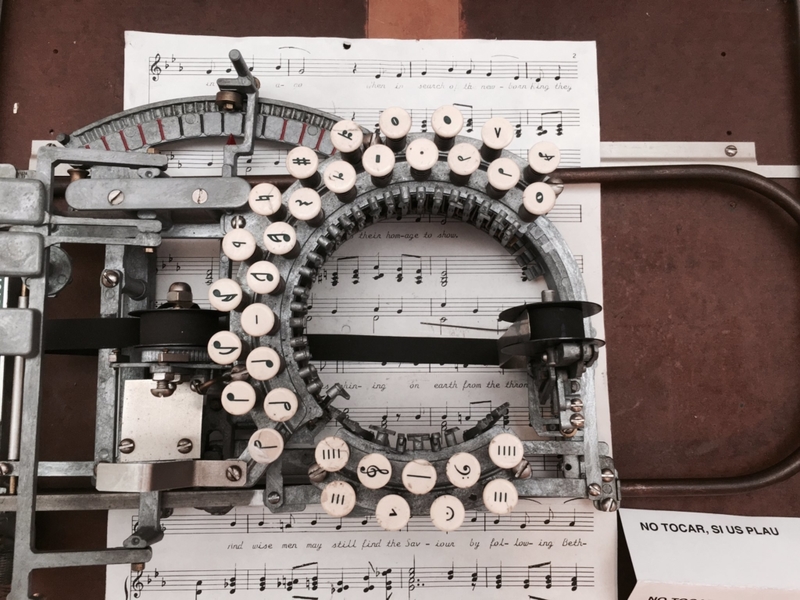
The Keaton Music Typewriter's design gave it a distinct look which made it very unique. It was used by many publishers, educators, and musicians who produced music copies in quantity. The device can be purchased online for anywhere from $6,000 to $12,000. The Keaton Music Typewriter is supposedly quite comfortable to use, although today’s typing musicians would probably argue otherwise.
The Benedictine Monastery of Admont, the Largest Library in the Entire World
Admont Abbey contains the largest library in the entire world and is one of the most impressive creations in Europe. It was completed in 1776, the same year that the United States Declaration of Independence was first signed. There are about 200,000 books in the library, including 1,400 manuscripts and 530 incunabula.

Admont Abbey was also the burial place for Anastasia of Kyiv, the Queen of Hungary circa the 11th century. You can also find various incredible paintings on the ceiling, with most of them featuring beautiful renditions of angels and the sky. You can visit there anytime during the year, and you don’t even need a guide to get around.
This Necklace, Made by One of the World’s Most Revered Jewelry Designers
Georges Fouquet was a French jewelry designer who rose to legendary status at 40, thanks to his Art Nouveau creations. He opened a shop with his father in 1891 and moved on to his own jewelry shop just nine years later. He designed jewelry for various famous and wealthy people, turning him into somewhat of a celebrity at the time.
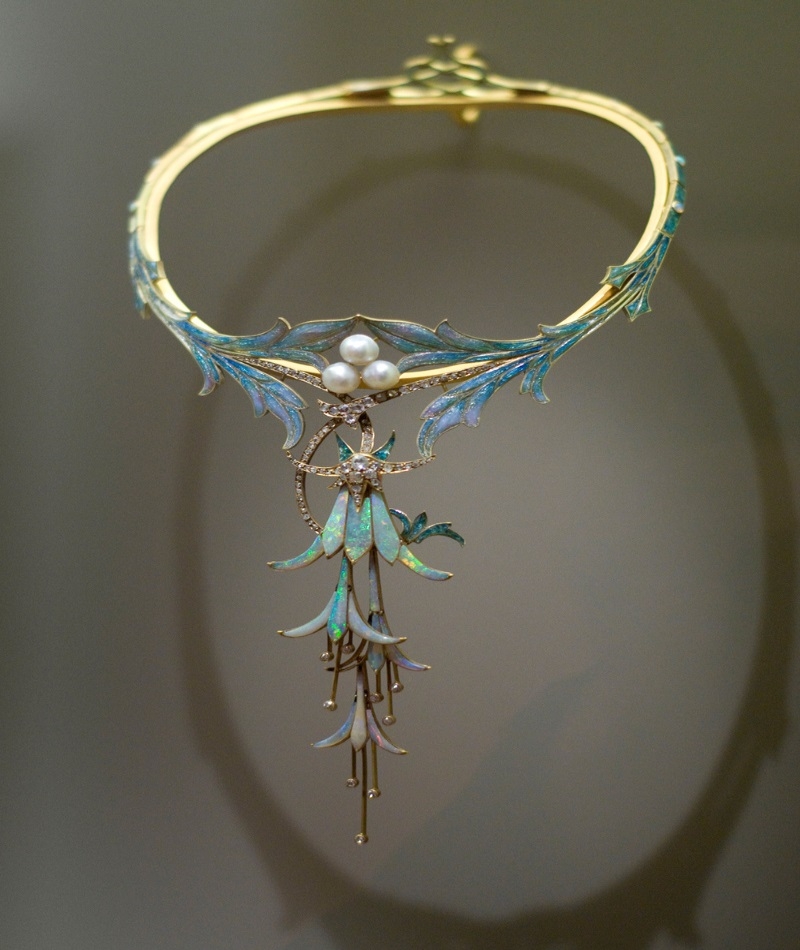
This piece is just one of Fouquet's brilliant creations. It shows the immense love and cares for detail that the artist had for his designs. His work can be seen at the Metropolitan Museum of Art in New York City, as well as in the Petit Palais in Paris. A recreation of Fouquet's shop was put up in the Paris Carnavalet Museum for those who want to visualize the man in action.
This Rare 1939 Lincoln Zephyr Coupe
The Lincoln Zephyr was sold from 1936 to 1942 as one of the automaker's cheaper midsize car models. They were highly aerodynamic, a benefit that was referenced in the car’s name. The car was extremely revolutionary at the time and was a big shift from the non-aerodynamic cars back then, which encountered a lot of wind resistance.
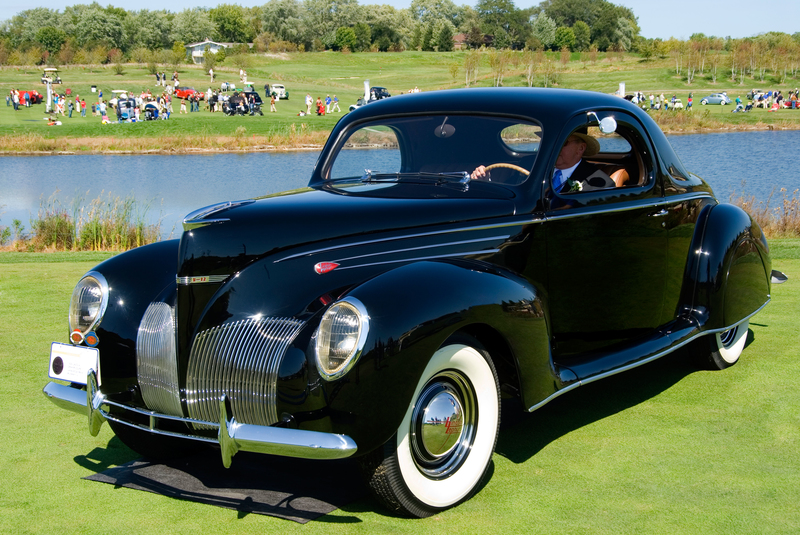
The car was created by Edsel Bryant Ford and featured a V-12 engine that was revolutionary at its time. Once the series began to die down, and Lincoln was looking to replace the Zephyr, the automaker came up with the Lincoln Continental, which ended up becoming its longest-running model.
These Shoes From Almost 2,000 Years Ago
A body was discovered in 1900 by a man who originally hailed from Damendorf, Germany. The body was aptly referred to as the Damendorf Man, although what was left of it can't exactly be called a man anymore. Almost everything was gone except for the man's jewelry and garments.
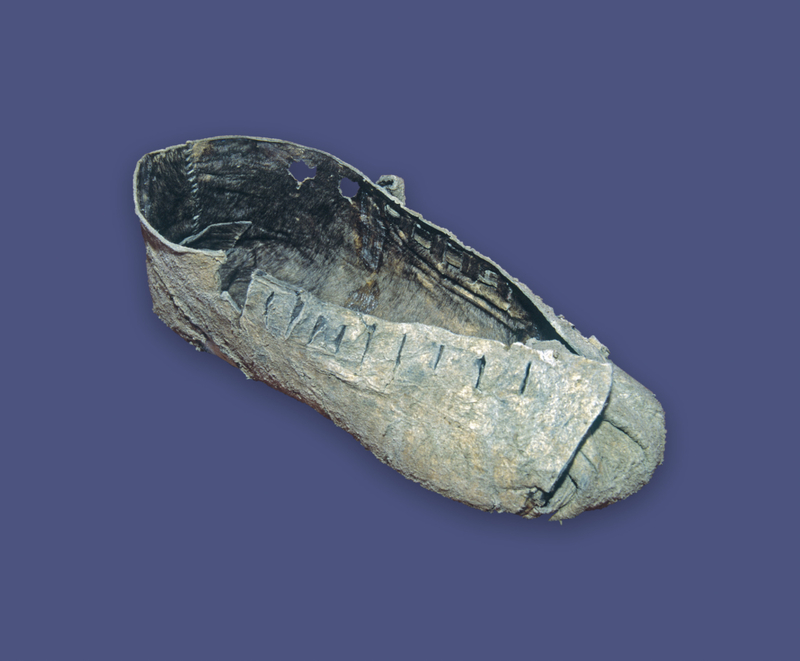
The Damendorf Man's shoes were preserved in perfect condition, and they were clearly hand-made from leather. These shoes show us what sandals might have looked like back then, as they attempt to cover the feet while still leaving air holes for breathability. They were studied by many researchers and even helped historians make a few new discoveries.
This 1,000-Year-Old Buddha Statue
Monks have been known to perform near-superhuman feats of mind control on more than one occasion. In 2015, researchers in the Netherlands were stunned when they discovered what is perhaps the greatest monk prank of all time.

More than 1,000 years ago, one monk decided to drink a highly poisonous tea to appear dead in a full lotus position. He was then turned into a real-life mummy. The dead monk was then cast into a statue and remained hidden inside it for almost twenty generations. If that’s not a true show of dedication, willpower, and commitment, we don’t know what is.
This Steamer Trunk From the 1800s
Back in the 19th century, people had to take long trips on trains for various reasons. There was no internet or phones at the time, so the only way to do business and make money involved a lot of excessive traveling. Steamer trunks were extremely popular back then, as people would often find themselves on the road for months at a time.

This brilliant steamer trunk was made in the 1800s and had a revolutionary feature that saved you from having to unpack everything once you arrived at your destination. It basically extended into a fully-sized stand-up dresser. Invention truly is the mother of necessity.
This 1936 Stout Scarab
The Stout Scarab got much press coverage and attention during the ‘30s due to its originality as the world’s first official minivan. Unfortunately, no amount of marketing and promotion could counter the fact that it cost $5,000, which was about five times the price of your average vehicle at the time. Each one was handmade, which makes every Scarab unique.

It was designed by William Bushnell Stout, a pioneering American inventor and engineer who revolutionized the automotive and aviation fields. The first prototype for this minivan was completed in 1932, and by 1935, the car was fully functional. Only five of these remain today, with one being housed in The Detroit Historical Museum.
Buford John Schramm Designed a Single Person Helicopter in 1964
Buford John Schramm was a prolific businessman who dedicated his life to developing his own helicopters. He was born in 1938 and founded RotorWay Aircraft in 1961 to develop helicopters. One of his most famous inventions is the personal helicopter, which would eventually be called the Eagle Helicycle.

Schramm was obsessed with building an aircraft that would be affordable to anyone and almost managed to do that during his lifetime. Unfortunately, the businessman's life was cut short in 2004 when he crashed one of his own helicopters. After his passing, Schramm was inducted into the Experimental Aircraft Association Homebuilder's Hall of Fame in 2006.
This Breastplate Piece of Armor
Napoleon Bonaparte led the French revolutionary forces until eventually being defeated at the famous Battle of Waterloo. Antoine Fraveau was one of the many young men who followed the distinguished military leader into combat, and he wore the standard metal breastplate armor.

Breastplate armor helped protect soldiers from blunt weapons, sword stabbings, gunshots, and other potentially-fatal methods of warfare. Unfortunately, no matter how thick the armor was, there was simply nothing that could protect a man from a heavy cannonball flying directly toward them. Fraveau was blasted in the chest during the famous 1815 fight and as you can imagine from the picture, was undoubtedly killed on the spot.
This Futuristic-Looking Cassette Radio
If you wanted to listen to music back in the '60s, your options were quite limited, as phones and iPods were non-existent back then. The only way to get access to songs was to manually purchase discs and cassettes at the store, after buying an extremely expensive radio disk player.

This 8-track cartridge player was originally made by the Ford Motor Company in 1965. It allowed music fans to buy cartridges and listen to music on their own time rather than having to wait for songs to show up on the radio. Funnily enough, it actually looks like something from the future and would have made a great prop in Stanley Kubrick's "2001: A Space Odyssey".
These "Winnie the Pooh"
A. A. Milne is best known for writing prolific children's books about the adventures of Winnie the Pooh and his friends. Milne found his muse in his son's various toy animals, which include almost the entire cast of Winnie the Pooh. The toys include Piglet, Eeyore, Kanga, Roo, and Tigger. Only two characters were created from his imagination - Owl and Rabbit.

Milne’s son was featured as the lead character in the books, as Christopher Robin is based on his son’s personality and name. Robin’s toys are on display at the Main Branch of the New York Public Library in New York City. Despite being almost 100 years old, they are still in near-perfect condition.
This Safe Belonged to the Founder of Jack Daniel's Whiskey
Legendary business titan and American distiller Jack Daniel is the founder of Jack Daniel's Tennessee whiskey distillery. While many don't know that the drink is based on a real man, his effects on the wine and alcohol industry have been of great proportion.

It is said that Daniel died in late 1911 due to blood poisoning. His cousin, Lem Motlow, inherited and became the owner of the brand shortly after his death. However, there's an alternative story behind Jack Daniel’s death: Jack kicked his safe in anger after he couldn't remember the combination to unlock it. Although the validity of the story is highly debated, it certainly helped turn the man into a real-life myth.
This Amazing Wooden Dragon Bench
Chainsaws are primarily used for cutting down trees and terrifying people in horror films. They are not exactly known as art tools. Estonian artist Igor Loskutow chose to take this powerful tool and used it to create one of his very best pieces. The sculptor has been using a chainsaw since 2002 to carve various artistic creations.

Igor Loskutow carved this wooden bench using just a chainsaw and managed to create a beautifully detailed dragon on it. The bench received top honors at the 2015 Huskycup World Title, and we can’t really imagine the award going to anyone else. This is just one of many of Loskutow’s creations.
This Was One of the First Fire Trucks That Provided Assistance at the September 11 Attacks
The entire world was drawn into chaos when the twin towers fell on September 11, 2001. As the towers were about to collapse, quick-reaction teams were sent to rescue as many people as they could. Many of these brave firefighters lost their lives while charging into the smoke-filled towers.

Ladder 3 was one of the first trucks to arrive at the scene. It was led by Captain Patrick Brown, who lost his and his men’s lives when the North Tower toppled on top of them and their truck. The truck was memorialized at the JFK International Airport for a full decade after the disaster. Since then, it has been moved into the Memorial Museum, where its remains serve as a reminder of the men's courage and bravery.
These Shoes were Used By Allied Spies During WWII
World War II was rife with intelligence operations, murder plots, and more. There was no internet back then, which meant that wars were still fought among enemy lines using various tricks. One of the most impressive and creative tactics employed by the Allies to counter the Germans was these reversed-sole shoes.

These shoes were absolutely brilliant, as they basically left tracks that led in the opposite direction. This is just one of many incredible ploys that were carried out during World War II and shows how creative people can get in survival situations. Allied spies used them to trick the Germans and make them lose their tracks.
Spirographs That Were Initially Created For a Very Different Reason
Many kids have fond memories of playing around with Spirographs. These tools allowed even the most artistically deprived kids to create incredible and scientific-looking drawings. Although this 1960s toy looks like something invented to help children draw, it was actually created for a very different purpose.

This geometric drawing device was first invented by Peter Hubert Desvignes, an English architect and engineer, and these were used to help prevent banknote forgeries. How, you may ask? Because Spirograph drawings were extremely hard to recreate, as each one was based on the luck of the draw, thanks to the device's roulette-based pattern.
These Designs of Pepsi Cans Over the Years - Starting in 1948
Everyone knows Pepsi, the carbonated soft drink manufacturer that was founded in the late 19th century. The company is estimated to be worth almost $20 billion and is Coca-Cola's largest rival to date. There is perhaps no better example of the changes that have occurred throughout the history of design than the modifications done to the Pepsi can’s appearance.

Back in the 50s, the beverage company's designs included various patterns and designs, but these were clearly ditched over the last two decades in favor of a solid color and logo. Like the cars of the '50s, people were once a lot more attracted to two-color designs with complex patterns. But much less so today.
This Skeleton Rocking Chair, Made in Russia More Than 250 Years Ago
Handcrafted rocking chairs have been selling for hefty prices over the centuries, but we can’t really see ourselves buying this one for any price. Imagine walking into your date's home for the first time and seeing this in the living room. You'd turn yourself around and BOLT.

This macabre rocking chair is shaped like a human skeleton. It was originally carved in Russia during the late 19th century and remains intact to this day. Various replicas of the skeleton rocking chair are made and sold today at highly affordable prices. We only hope these have not been sold to anyone we know.
This Mysterious Tibetan Skull
Millions of people are fascinated with the idea of looking for bargains at markets and antique shops. The allure of finding a truly unique historical specimen and selling it for a massive profit is a huge trend that developed in recent decades. One such story of success happened in Vienna back in 2011, when a 300-year-old skull was found in a small antique shop.

According to the Austrian store owner, this skull belonged to a man who provided medical assistance to Tibetan monks. The man's teeth and skull were perfectly preserved, and his head was carved with various depictions of the macabre. The true origins of the skull remain a mystery, but it is still considered a precious and rare piece of history.
These Giant Japanese Crabs
Few newly discovered animals look as terrifying as this one. The Japanese spider crab can reach up to eighteen feet in length and weigh more than forty pounds. They quickly became a delicacy after being discovered by the nation that brought us sushi and anime.

The Japanese spider crabs have the longest leg span of any arthropod currently discovered on Earth. These creatures are far from extinct and tend to spend most of their time in underwater holes. Although it’s hard to have sympathy for something that looks like a horror movie monster, we’d like to note that their population is dwindling due to over-fishing.
A 2,000-Year-Old Green Stone Mask
The green stone mask shown in the picture below dates back more than 2,000 years ago. It was discovered in 2011 by researchers in Mexico who were investigating the base of a pyramid. The Pyramid of the Sun in Teotihuacán, Mexico, got its name from the Aztecs. This ancient civilization was a lot more advanced than we had originally believed.
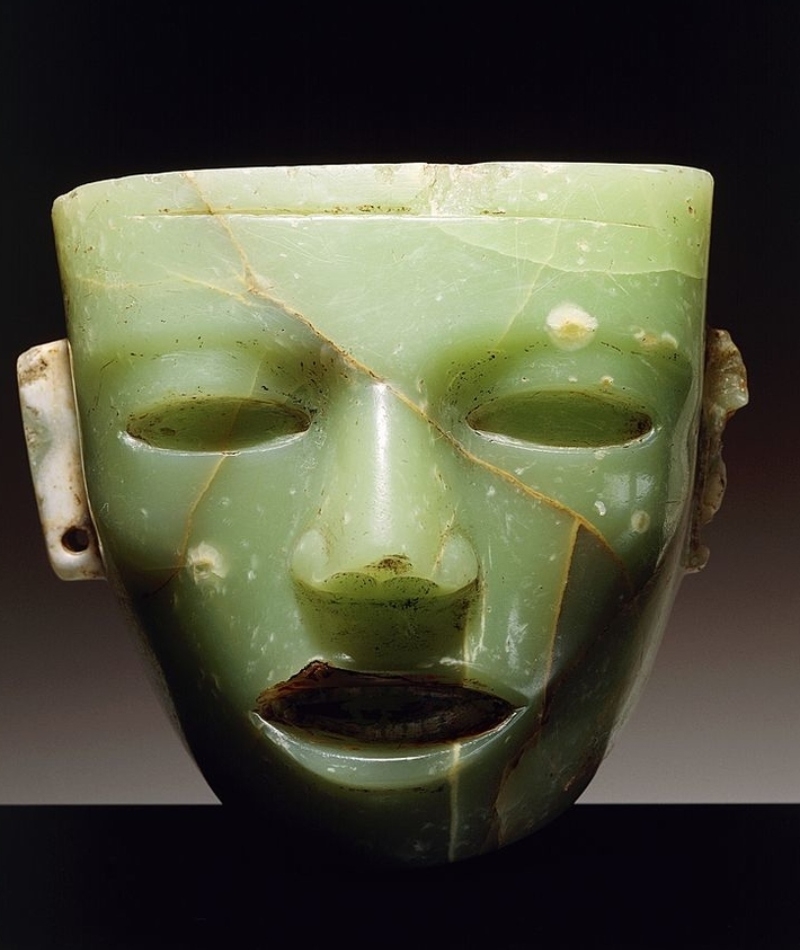
The Aztecs had access to many technologies and rituals which have only been discovered in the last few centuries. These let them carve rock into beautiful sculptures like this unique mask, even before the tools for such creations were invented.
A 4.5 Billion Years Old Meteor
Some people occasionally stumble upon a $5 bill. What you don’t expect to find on the ground, though, is a 4.5 billion-year-old meteor made out of pallasite. About two decades ago, an anonymous hitchhiker was traveling across Fukang in Xinjiang, China, when he suddenly stumbled upon this extraordinary mass from space.
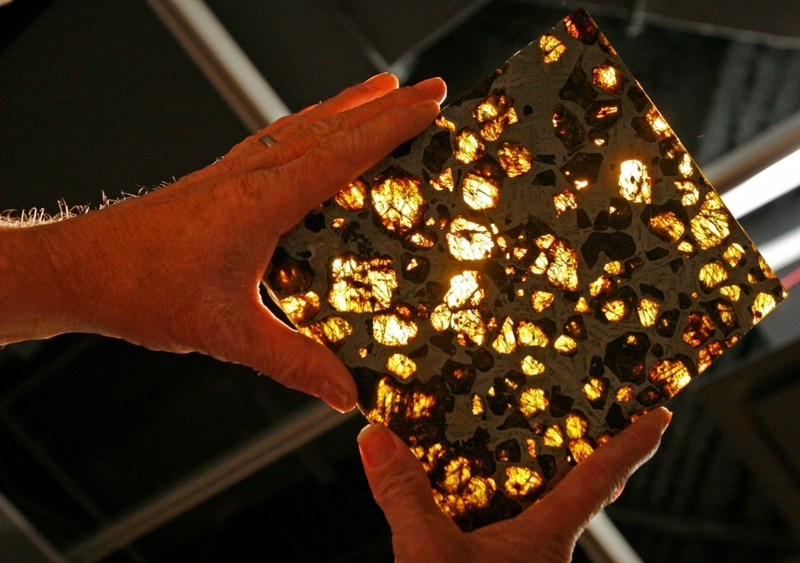
This beautiful rock is now known as the Fukang Meteorite. It is covered with pieces of olivine crystals and embedded in an iron-nickel matrix. Scientists aren’t exactly sure where this came from, but they do know that it’s extremely valuable. The meteorite weighs slightly over a ton, and just a few grams of its crystals are worth over $500.
This Fireman Bicycle
Up until the ‘30s, whenever a fire broke out, firemen had to drive around on funny-looking bicycles and use their legs to get around. These men used to patrol around the city and look for fires with the hope of catching them before they began spreading.

Firemen’s bicycles were equipped with a long hose that could attach to a water source. In addition, a small harness crowbar holster was also attached to allow quick entry into buildings by breaking down doors. According to some relevant sources, this bike originates from the workshops of Birmingham Small Arms in Great Britain.
Petra, the Famous Archaeological Site, Was Carved From Pure Sandstone
It's hard to imagine that the entire wall of Petra was carved by hand on a wall of sandstone. It's an archaeological site that's matched by no other and remains one of Jordan's key attractions for travelers. The area was inhabited as early as 7,000 BC, and the landmark was likely made around 2,000 BC. It was the home of the ancient settlers, the Nabataeans.

The Nabataeans constructed Petra using their master skills in crafting and building. Their city was the epitome of architecture. Historians are baffled to this day regarding how exactly they pulled it off. Unfortunately, most of this area was destroyed during an earthquake in the 6th century. At least the most impressive architecture there survived and can still be visited today.
This Butterfly Brooch Created During the Victorian Era
People have worn jewelry for as long as civilization has existed and mostly used it as a symbol of royalty, wealth, and status. Nowadays, jewelry is much more accessible and is worn by almost everybody. During the Victorian Era, enormous changes happened in the jewelry industry, as many aesthetic revolutions happened during this time.
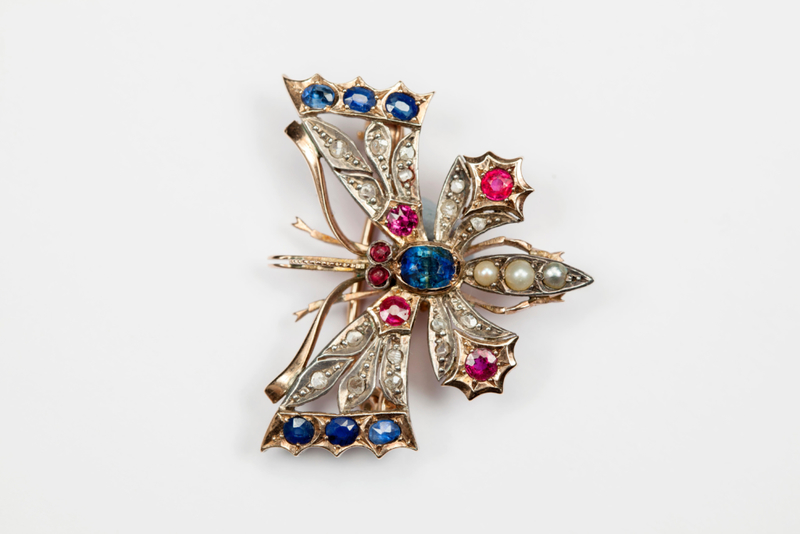
Another major shift happened on the economic side, as factories were opening at rates never before seen, which caused the jewelry markets to boom. Brooches were all the rage during the Victorian Era and featured everything from insects to flowers. This beautiful butterfly brooch is just one example of the careful artwork present during these times.
A Downed WWII Fighter Plane
During the second world war, fighter planes were the most common for air invasions. However, these planes were usually easy to take down and were virtually guaranteed to crash at some point. Americans used Tomahawk fighting planes, while the British used the Curtiss P-40 Kittyhawk. These planes reached speeds of almost 400 miles per hour and were able to fly up to 240 miles at a time.

The crashed Kittyhawk in the picture above was spotted accidentally in the Sahara Desert after laying there for over five decades. The plane was discovered by a Polish oil company worker in early 2012 and is believed to belong to the 24-year-old Flt Sgt Dennis Copping. He crashed more than 200 miles from any human settlement and, unfortunately, probably died on the spot.
This Beautiful Boxwood Miniature, Created More Than 500 Years Ago in the Netherlands
Some artists take a painstaking amount of time to perfect their artwork. This is impressive today, but even more so when speaking of artwork from over five centuries ago. This piece represents the crucifixion of Christ and shows the brutality of the Romans' treatment, as well as the religious leaders of the time.
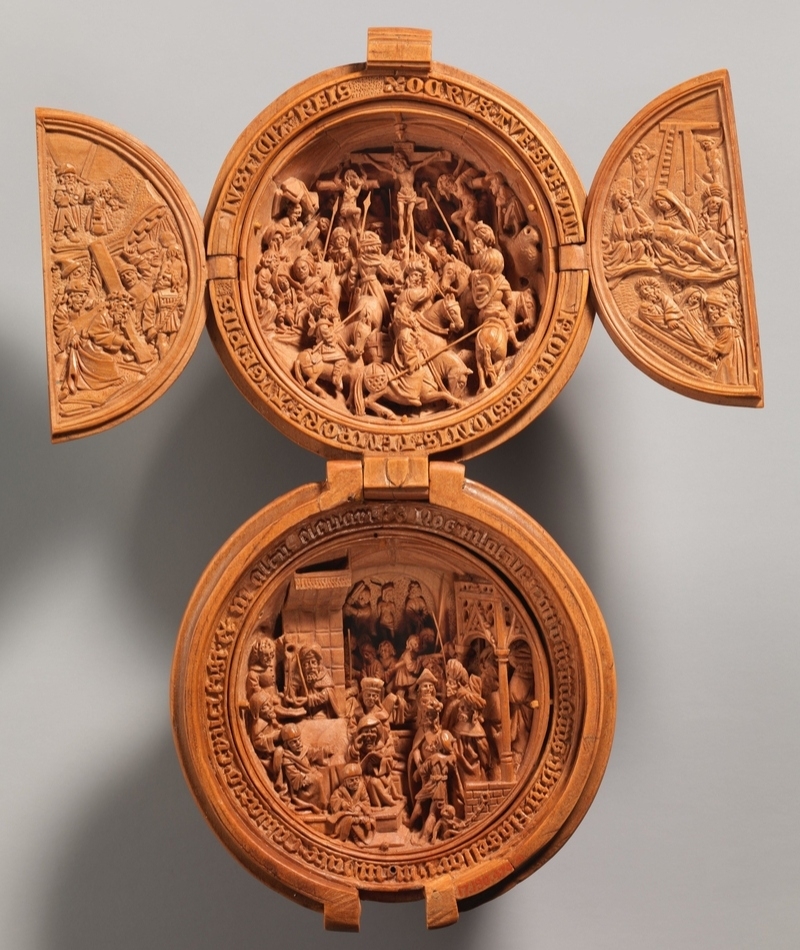
We can't begin to fathom how long it must have taken to make this piece of art, as every little detail was meticulously honed to perfection. Researchers believe that this kind of art was a symbol of wealth back in the 16th century. Most box carvings were based on depictions of various religious events, which is why they were done with such passion and care.
Army Rations from World War II
World War II was one of the most brutal events of the 20th century and is considered the most fatal war in history. Soldiers went through extremely rough climates, as they were not accustomed to the European cold.

In order to cope with the intense physical requirements, these soldiers used compact army rations, which included some surprising ingredients. Army K-rations included crackers, tinned meat, a small piece of chocolate, and even contained a box of gum and cigarettes. Each ration contained up to 3,000 calories, which was a reasonable amount for men who spent their days fighting in freezing weather.
The Prague Astronomical Clock is One of the World’s Oldest Functional Clocks
Most historical monuments in Europe represent things that once were but are now just preserved. One monument in Prague is still fully functional. The Prague Astronomical Clock is one of the most beautiful and pristine landmarks in the entire Czech Republic. It was originally built in 1410 and has withstood many difficult and turbulent times.

This medieval instrument was used to display astronomical information, such as the relative positions of the sun, moon, zodiacal constellations, and major planets. It can be found on the southern wall of Old Town Hall in the Old Town Square. Thankfully, it was perfectly preserved since its creation and will most likely stay there for many more decades.
This 16th-Century Ring Can Turn Into a Beautiful Astronomical Sphere
Rings were a common piece of jewelry dating back more than 5,000 years ago. While they were mostly used as ornaments to symbolize wealth, some used them as a way to conceal things. This unassuming, though beautiful, ring hides something special inside.
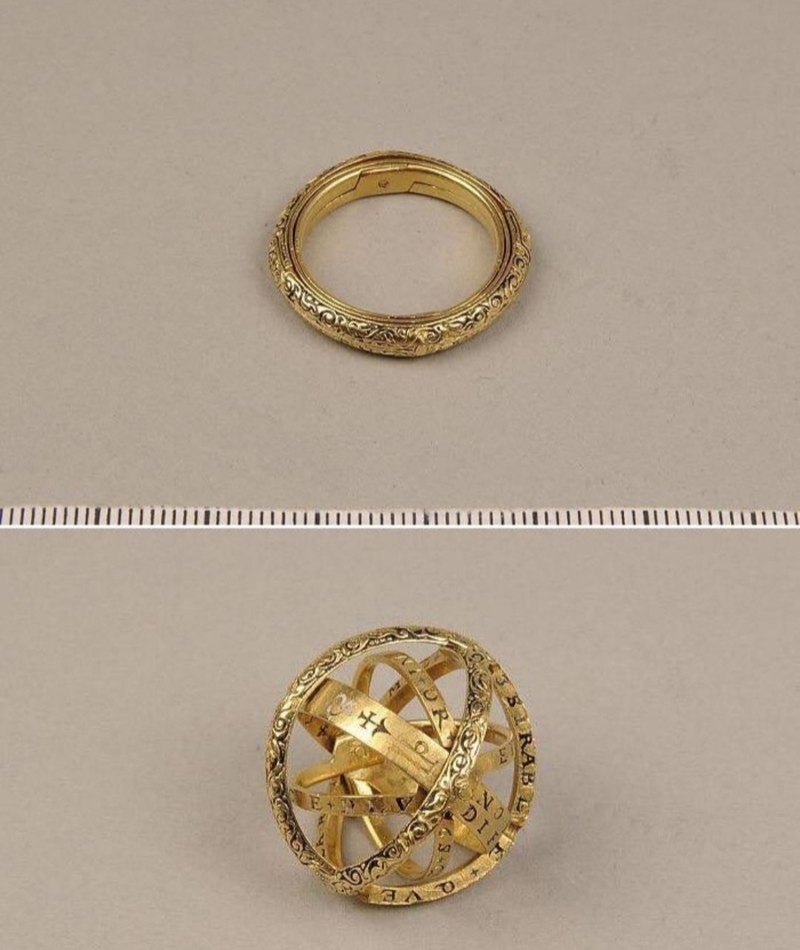
This aesthetic 16th-century ring actually folds into a series of smaller rings. These rings create an astronomical sphere, which is a remarkable achievement considering it was made more than five centuries ago. The identity of the ring maker has not yet been discovered, but it's believed that the ring was originally crafted in Asia. Next time you're at a pawn shop, take a closer look at some jewelry items.
Sculptor Chauncey Bradley's Statue 'Undine Rising'
'Undine Rising from the Waters' is a marble statue made by Chauncey Bradley Ives in the 1860s. The statue is based on the medieval story of Undine, a mortal but soulless sea spirit. The story became famous mostly through theater and opera during the 19th century, which prompted Chauncey to depict the story's climax in his statue.

The statue portrays Undine rising from the water to take revenge on her unfaithful husband. It uniquely portrayed Undine as a soft and gentle victim rather than an angry, vengeful wife. Ives went on to sculpt many more neoclassical works and passed away towards the end of the 19th century. The statue can still be visited at Yale's Art Gallery.
One of the World’s First Functional Toasters
If you’re a bread lover like us, you probably start your day with a great piece of toast. You’d think that toasts are a relatively recent invention, but this 1920s toaster proves that we are far from the first ones to invent them.

While the world’s first electric toaster was invented in 1893 by Scotsman Alan MacMasters, it was a huge flop due to a lack of interest. The model shown above is one of the first commercially successful models and shows just how far we’ve progressed during one century. It can only heat bread on one side at a time and has to be manually flipped to finish the job. We’re definitely happy to have been born in this day and age!
This Futuristic Steam Line KJ Henderson Motorcycle
The 1930 Henderson Model KJ Streamline is a bike so cool that it looks futuristic even by today's standards. It was originally built in 1930 by Orley Ray Courtney, a revolutionary streamliner engineer. He believed that the motorcycle industry wasn't up to par with current technology, so he built his own instead.
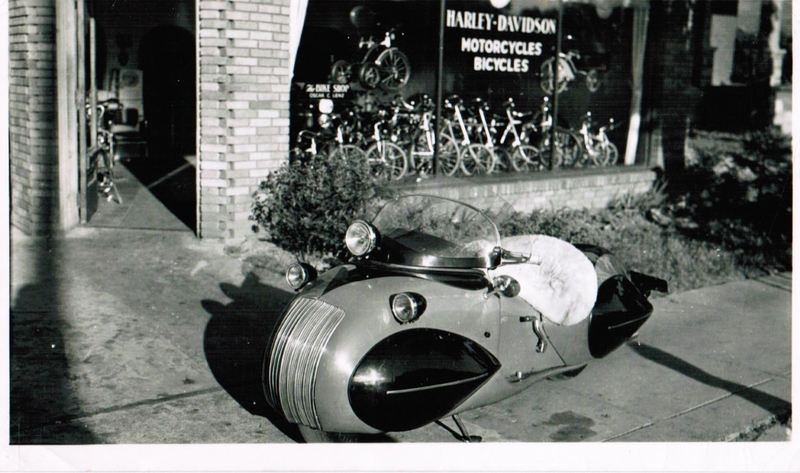
The bike features a complex curved body that was extremely hard to replicate. This futuristic masterpiece features a low, wide seat that fits a single rider. There's nothing currently like the Henderson, and it is considered the pinnacle of art deco design in the motorcycle industry. Even today, riding around town in this would turn some heads - so imagine the response in the 1930s!
This Picture of Gold Miner Bernhardt Otto Holtermann, Posing With Over $15 Million Worth of Gold
Gold has been used for ages as a hedge against inflation, and it helped keep the world’s currency from imploding. Gold prospectors made it their life’s work to look for rich veins of gold. These were often worth between a hundred thousand and a hundred million dollars.

Bernhardt Otto Holtermann was a gold prospector and businessman who fled Germany and relocated to Australia to avoid being drafted by the military. He was quite unsuccessful at digging gold until one day, he hit a 1,000-pound piece of gold. Above, you can see a famous photograph of Bernhardt with his discovery. In today’s money, the piece is worth about $15 million, which made him a quintessential American success story.
This Diving Suit Prototype, Originally Created in 1882
This design was originally created during the Victorian Era and was built as a deep-diving prototype. The diving suit was made entirely of metal and weighed over 800 pounds, making it impossible to travel with. Initial driving tests were all unsuccessful, as the suit always ended up filling with water when submerged.

It’s easy to look back today and point out just how clumsy this invention was, but unfortunately for Victorians, this was the top of the line when it came to diving equipment at the time. This design was built by the Carmagnole brothers of Marseilles, France. It took almost six more decades before the world’s first fully-functioning scuba gear was invented by Jacques-Yves Cousteau and Émile Gagnan.
The World’s Oldest Functional Sunglasses
Most people don’t know that the sun is actually a lot harsher on the eyes in snowy, cold areas rather than in scorching hot deserts. The Inuits were more than aware of this fact as they trudged through snowy regions more than 4,000 years ago.

Back then, Inuits couldn’t just stroll into a Ray-Ban store and pick up a pair of sunglasses. So they carved their own out of various rocks and wooden objects. These sunglasses worked in principle, as they helped limit the sun’s exposure to their eyes. Unfortunately, they also severely limited the wearer’s line of sight, which often resulted in some very unfortunate accidents.
This Boot, Perfectly Preserved for More Than 2,300 Years
We can’t remember the last time a shoe lasted for more than one winter. However, keep in mind that today, most of us don’t walk for more than a mile or two on an average day. But imagine a boot that was used to track thousands of mountains in the winter snow, being preserved almost perfectly for over 2,300 years.

The boot in the picture dates back to 300 BCE and was used by travelers in the Altai Mountains. It was preserved thanks to the freezing cold, which kept it in perfect condition for researchers to admire. The boot contains various materials, such as pewter, pyrite crystals, gold foil, and glass beads. While it doesn’t look like anything we’d ever wear, you can’t help but appreciate its beautiful craftsmanship.
This Roman Warrior’s Skull, Which Dates Back to 52 BC
The Gallic Wars were a series of battles led by Romans on behalf of Julius Caesar. The Romans secured an easy victory over the Celtic tribes due to their vast military superiority. More than 30,000 Romans died during the wars, which doesn't sound like such an astounding number after considering that over a million Celts died as well.

These victories paved the road for Caesar to become the sole ruler of the Roman Republic. The skull shown in the picture above belongs to one of the fallen Roman soldiers who fought in the Gallic Wars. He was impaled by a spear through the brain, which was most certainly his cause of death. His skull remains perfectly preserved to this day, with the same spear still inside it.
This Victorian-Era Hearse is Still Fully Functional
This Victorian-Era hearse was found in Dresden, Germany, and is still fully functional more than two centuries later. It featured gorgeous carved angels and an art style that is almost non-existent in this day and age. The identity of this hearse’s owner remains unknown and will likely never be discovered.

It wasn't until the '20s and '30s of the 20th century that Ford's Model T began populating the roads, replacing horses and carriages. Despite how beautiful these hearses were, there were highly unhygienic. Imagine having hundreds of horses roaming around and going to the bathroom all around your city. Luckily, cars today don’t ever need the bathroom.
These Gloves, Worn by a Holy Roman Emperor
You may notice that these gloves look almost exactly like the ones Sauron from "Lord of the Rings" wore throughout the trilogy. However, these metal gloves were worn by Maximilian I, a Holy Roman Emperor. He received them in preparation for war and kept them on for more than a decade.

Some speculate that the Holy Roman Emperor wore these gloves in battle, while others believe that they were on his hands at all times. Gauntlets were an important piece of armory back in the day, as sword-wielders had to defend themselves with them. Dismemberment would surely make a fight harder to win, which is why a pair of these was so important.
These Horses and Their Carriage, Which Belonged to the Thracians
Archaeologists have found these 2,500-year-old remains of two horses and their chariot, along with perfectly preserved wheels, a seat, and a boot. These are believed to have belonged to the Thracian nobility. This discovery was made in a Thracian tomb along with other expensive artifacts of the time. The tombs were located in northeast Bulgaria in the village of Sveshtari.
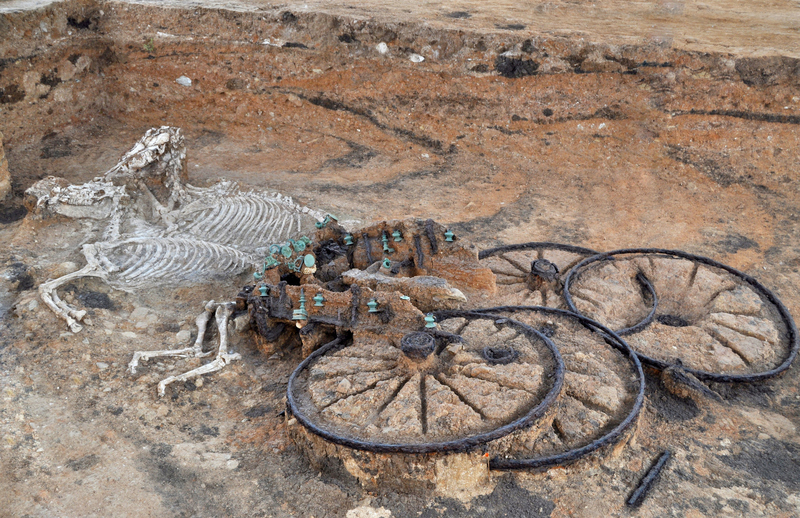
These are the single most well-preserved remains of horses and a chariot, and it's unlikely that a better one will ever be discovered. The Thracians were a group of Indo-European tribes that spread across Eastern Europe. It's believed that the first Greek Thracian colonies were founded in 800 BC.
This Costume Worn by Vivien Leigh's 1939 "Gone with the Wind"
'"Gone with the Wind" was released in 1939, based on a novel of the same name by Margaret Mitchell. This romantic, epic historical film was extremely popular when it was released and quickly became the highest-grossing film in the world for over two decades. 'Gone with the Wind' is also considered one of the best films of all time.
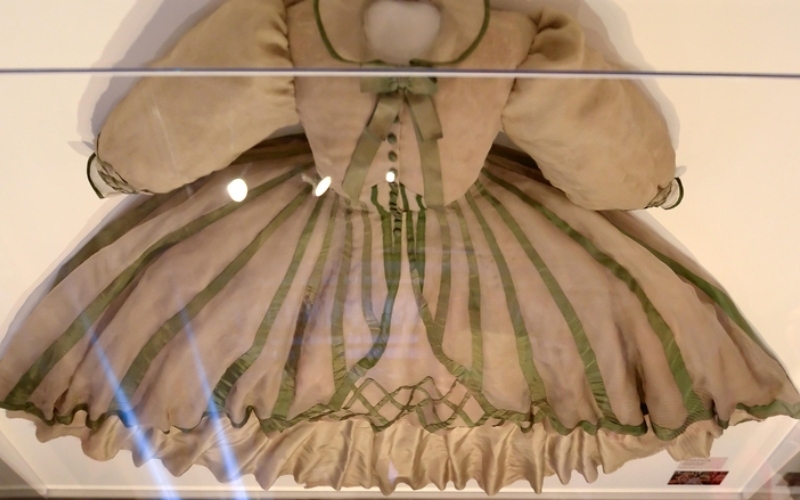
Part of what made the film stand out was its incredible costumes and outfits, which were made by Walter Plunkett. This man was responsible for more than 150 different Hollywood projects and designed some of the most iconic film outfits at the time. The costume in this entry was worn by Vivien Leigh for her role in the film.
This Insane 1950s Kids Toy
The 1950s were filled with nuclear ideas for many historical reasons. Parents spent their days worrying about a potential war while their children studied technology. One of the most bizarre and unique kids' toys at the time was Gilbert's nuclear physics "Atomic Energy Lab," which contained three live uranium pieces and a Geiger counter.
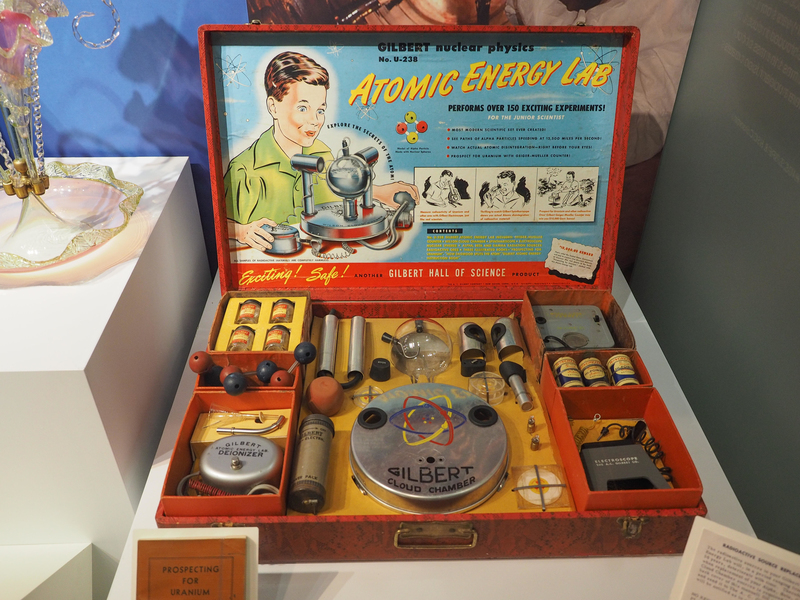
The toy allows kids to study nuclear energy in a safe and controlled matter, or at least that's what the toymaker claimed. Everything about it screams “The American ‘50s”, from the cartoon art on the box to the regular disregard for safety standards. Unfortunately, we can’t really imagine this kind of toy working in today’s more environmentally conscious climate.
A Modified 1946 Tucker Torpedo Prototype II
The 1946 Tucker Torpedo Prototype II is often regarded as "one of the great what-if stories of automotive history." It was built by Preston Tucker, an automobile entrepreneur, and was first known as the "Tucker Torpedo." Like many entrepreneurs, Tucker was overly optimistic and believed he'd be able to sell it for just $1,000. The final price was closer to $4,000.

A 1988 film was made about his adventure relating to this car's production called "Tucker: The Man and His Dream". Unfortunately, Tucker was only able to create around 50 units of this car before his company had to close its doors in early 1949. Many regard it as one of the most advanced cars of the time, with the third directional headlight being the best addition to the car.
These Lace-Up Boots From the 19th Century
Female fashion has undergone more changes in recent decades than we can keep track of. Back in the late 19th century, various economic changes allowed people to trade clothes all across the Westernized world. These shoes are just one example of the kinds of footwear that were made possible by this economic shift.

Female entertainers laced up every night and wore these stylish leather boots during their performances. They feature many stars and a heel that would make even runway models cringe. The boots were preserved in an almost perfect state and show the weird kinds of fashion that were acceptable back in the day.
This Triple Decker Bus from the ‘30s in Berlin, Germany
Just kidding. Double-decker buses have existed since around 1923, but triple-deckers were never adopted as a viable and widespread public transportation solution. This photo is actually a fake. It was created as an example for the business pitch supporting the creation of triple-decker buses.
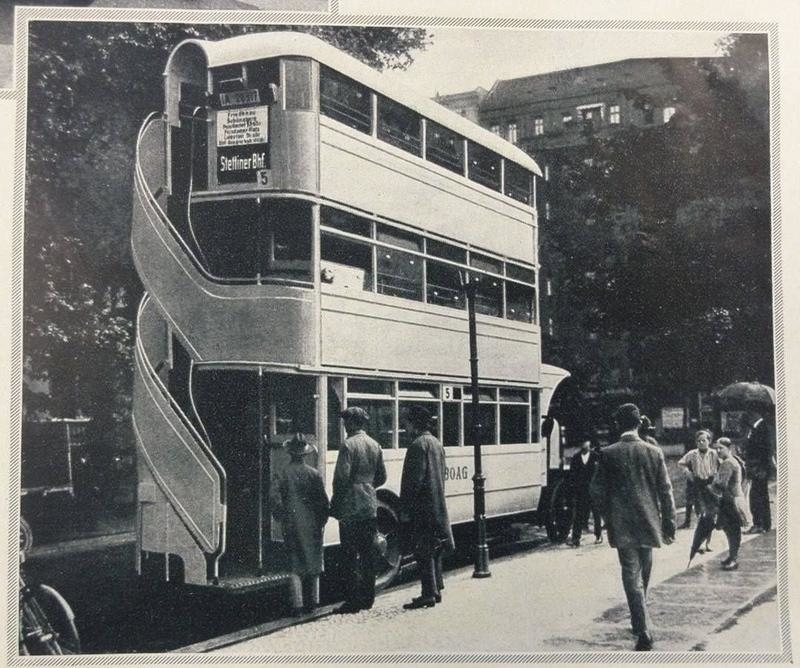
We can only imagine how much more efficient public transport could be if you were to add 33% more carrying capacity to each vehicle. Either way, most of the traffic congestion nowadays is caused by private cars, which usually contain just one person in them. These triple-deckers look like an extremely unsafe solution, which is probably why they were never legalized.
This Futuristic-Looking Dymaxion
This is a Dymaxion prototype. Just three of these were ever made. The Dymaxion inventions were revolutionary in the vehicle industry and were predicted by many to be the future of cars. When Buckminster Fuller, their inventor, was asked why he named it a “Dymaxion”, his answer was that the combination of dynamic, maximum, and tension sounded cool to him.
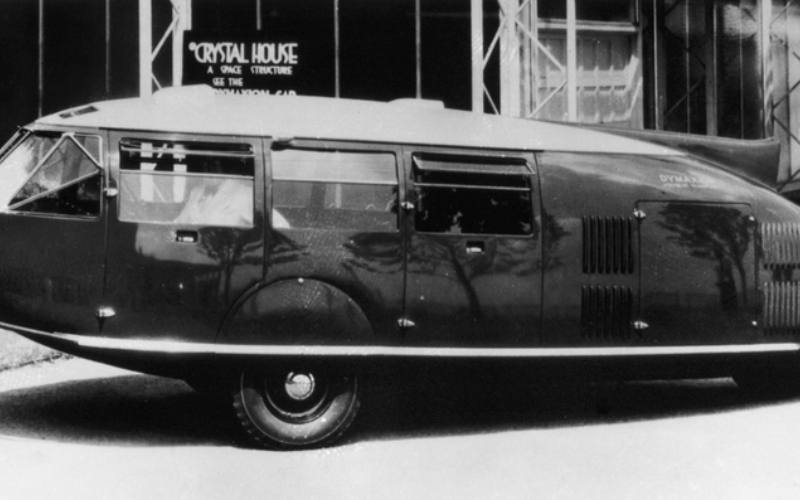
This car was custom-made by the designer and was meant to be displayed at the 1934 Chicago World Fair. Unfortunately, it was involved in a car accident on the way there, which put a damper on the whole event. Fuller eventually passed in 1983 at 87 years old, but not before developing numerous inventions, including the geodesic dome and dymaxion house.
This Perfectly Preserved Wonderful Waterfalls Ring Toss Game
The premise behind this game was simple, you had to get the small floating rings to all stack up on the two poles in the box. This was easier said than done, as you had just a single pressure button for moving the rings. We would often shake the box in frustration when the last two or three rings got stuck on the side of the box, meaning that they couldn't be moved.

With the limited attention span of kids today, we can hardly imagine them playing this for more than a few minutes before quitting in frustration. For children of the '70s, though, this was a game you could spend an entire day playing.
This Vietnamese Bridge is Held Under Two Massive Stone Hands
Vietnam is one of the most fascinating countries in Asia. The country is bustling with aromatic street foods, incredible trekking routes, lively countryside, and historical locations that will blow your mind. One of the most exciting landmarks in Vietnam is the famous Cau Vang Golden Bridge.

The Cau Vang Golden Bridge is a 500-foot pedestrian bridge connecting the two locations in the area and providing an incredible view. What’s even more amazing about it is the two enormous stone hands that appear to be holding the bridge. These are actually made of fiberglass and wire mesh and were built in recent years. If you’re ever visiting this wonderful Asian country, make sure to cross the golden bridge and take a picture!
This Marie Antoinette Watch Was Worth Over $30 Million
You may recall Marie Antoinette as the last queen of France, but she was also notorious for suggesting her people eat cake when they ran out of bread. The queen was suited by many individuals, and they spared no expense when it came to getting her attention.

One of Marie Antoinette’s suitors presented her with a watch that was arguably the most expensive and advanced ever built at the time. It had a full calendar, 23 different settings, and almost 1,000 parts. It’s considered to be the fifth most complicated watch ever made. Unfortunately, our lovely queen didn't get to enjoy this watch as she was executed in 1793, and the watch arrived at her door more than three decades later.
The Statue of Liberty’s Face Viewed From the Inside
The Statue of Liberty was constructed in the late 19th century and delighted the world with its incredible inspirational message. It was built on top of Liberty Island in New York Harbor in New York. The statue is a gift from France to the United States and was designed by French sculptor Frédéric Bartholdi.
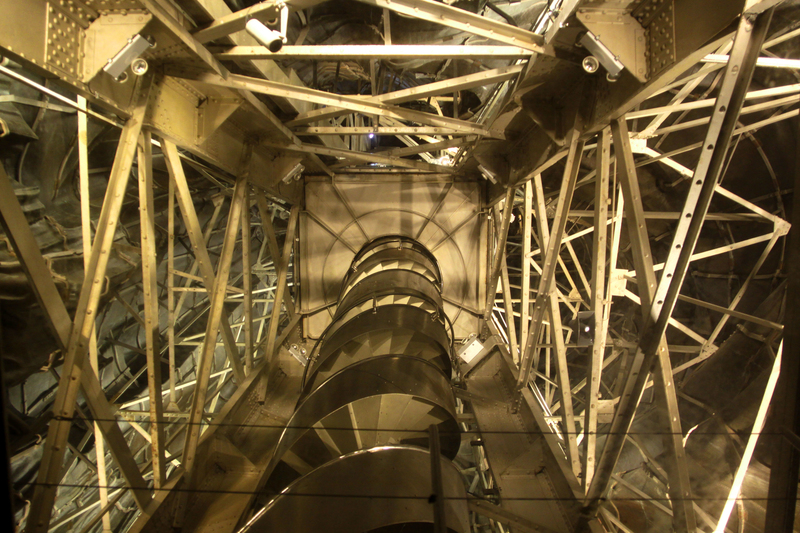
While the Statue of Liberty represents freedom, justice, and opportunity, it is much less inspirational when you look at it from the inside. This photo was taken from inside the statue, where it’s all hammered metals and beams. You can still see the features that make the statue from the inside, but honestly, it looks like a completely different piece.
These Cow Soles From the Prohibition Era
The prohibition era was quite a notable time in American history. After a period of alcoholism and family violence, the federal government instituted a nationwide constitutional ban on the production, importation, transportation, and sale of alcoholic beverages, which lasted from 1920 to 1933. This led to an unbelievable cat-and-mouse game between criminals and the FBI.

The FBI was hot on moonshiners’ tails and constantly found new ways to catch them. One of these was by using footprints as evidence, which got many moonshiners arrested and charged. These criminals found an original way to get around this problem by using cow hoof imprints as false shoe bottoms, which completely masked their footprints.
This 16th Century Gold Ring Features a Sundial and Compass
If you wanted to know your location during the 20th century, Google Maps wasn’t an option. You had to either use a physical map or politely ask someone for directions. If, however, you wanted to do that before the 20th century, you pretty much had to rely on a sundial and compass.
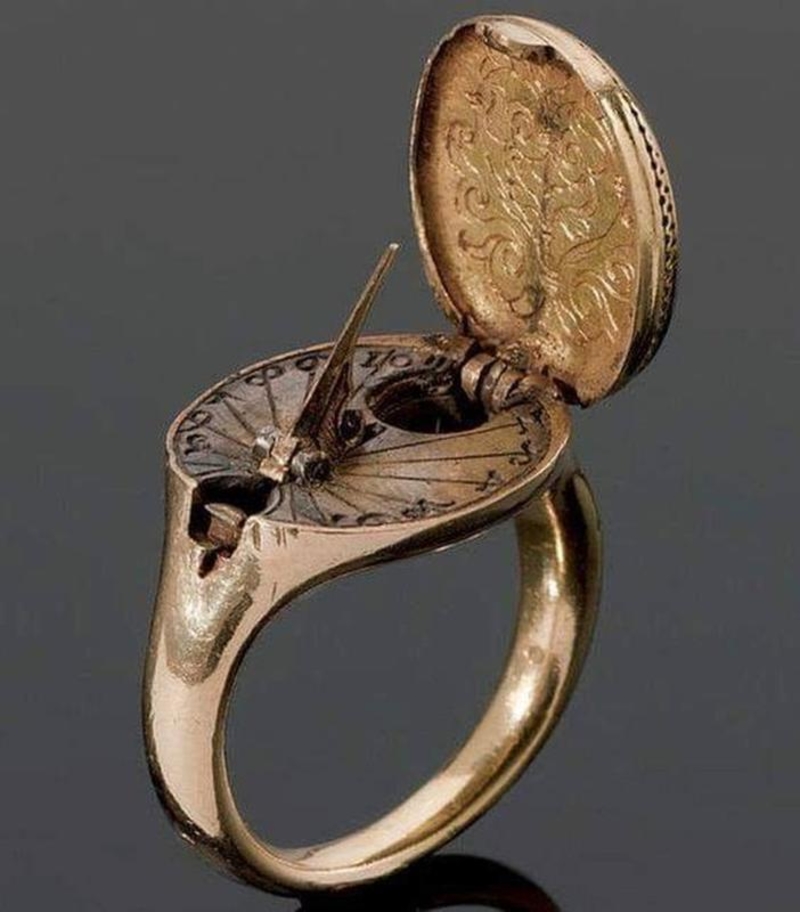
Getting from place to place before modern times was quite complicated and dangerous. This 16th-century gold ring was created for both style and navigation. It is made of gold and features a sundial and a compass. The ring has a latch that reveals both and was quite the genius invention back when it was first made.
This Surgeon Kit from the American Civil War
There weren’t many places as terrible to be in between 1861 and 1865 as the United States of America. Roughly 620,000 citizens lost their lives during the Civil War, which primarily centered around the rights of African-Americans and their release from slavery. This figure represents about half of the American casualties of war from the day the nation was founded.
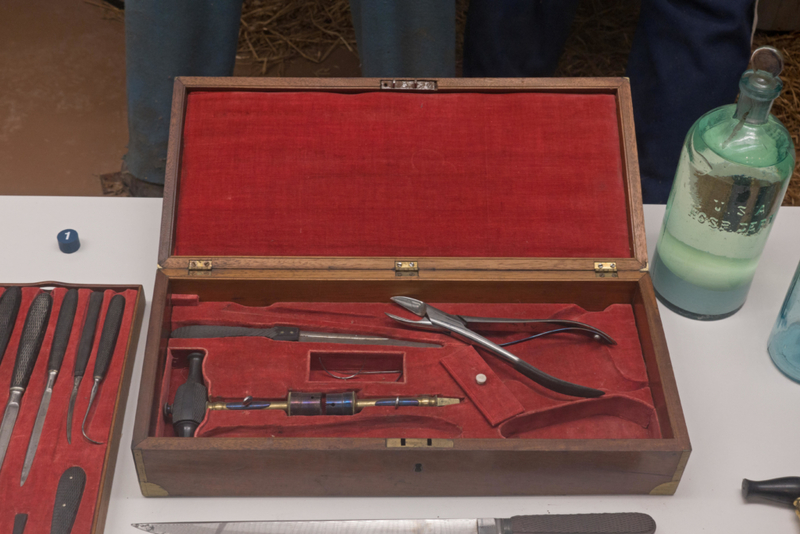
The main firearms used during the Civil War were rifled muskets, while various cutting weapons were also used. Considering that medical technology was much less advanced back then, you can only imagine how terrible things could get on the battlefield. This picture of a fully-stocked medical kit shows just how scarce medical tools were back then, and many lives were lost as a consequence.
This Picture of Ford Executives Select Colors For Their Automobiles in 1953
Unless you’re planning on ordering a $200,000 custom-made Rolls Royce, chances are that you have a limited selection of colors to choose from for your new vehicle. While most of today’s cars are limited to a single color pattern, most automobiles contained a combination of two colors during the ‘50s. They usually had a primary body color and a secondary one for the roof.

In the picture, two Ford executives from Michigan are examining more than 70 of their vehicle’s scale models to see which color palettes look best on them. The chosen models would eventually turn into mass-production cars. Like many automakers, Ford has since ditched the two colors design in favor of a single metallic color for most of their vehicles.
This 1967 Corvette Stingray Turned Into a Boat Hybrid
The Corvette Stingray has been one of the most admired supercars on the road for a very long time. It represents the best when it comes to speed, aggressive design, and raw engine power. In recent decades, a man chose to turn his ‘67 Stingray into a functional boat hybrid.

He did this by lifting the top off his stingray and putting it on a fiberglass boat bottom. This turned the car into both a supercar and a boat at the same time. Unfortunately, these things don’t always work as well as they look, and it’s usually preferable to have both a car and a boat instead of one that does both.
The Arm and Torch of the Statue of Liberty
As we mentioned earlier on, the Statue of Liberty was originally imported from France. Many people don’t know this, but it took several pieces to make it work. This massive statue was designed in parts to be assembled later, as its French designer and metalworker knew that this kind of project couldn’t be done in one go.

The statue's hand lived on top of this building in New York City’s Madison Square Park from 1876 to 1882 before moving on to its current iconic location. This was quite an expensive project to complete, as the actual cost to build the Statue of Liberty was the equivalent of $250,000, or about $6 million when adjusted for inflation.
This Restaurant Owner Offered to Open a $10,000 Bottle of Wine as a Prize for Osama Bin Laden’s Capture
Osama Bin Laden became the world’s most notorious and hunted man after 9/11. He was blamed for over 3,000 deaths that occurred that day, and the entire U.S. Army was hot on his tail. A few years later, Ted Balestreri, a restaurant owner from California, made a costly joke that turned into a reality.

He suggested that if Leon Panetta, the U.S. Defense Secretary, were to capture or kill Osama Bin Laden, he would open a bottle of his 141-year-old Chateau Lafite Rothschild, estimated at roughly $10,000. Once Bin Laden was taken down in 2011, Panetta told his wife, 'Tell Ted to get that bottle ready.’ The former Secretary of Defense enjoyed the bottle with several of his friends in CIA shot glasses, which they were allowed to keep.
The Elephant Gates in Copenhagen, Adorned With Symbols That Remain to This Day
It's impossible to call a tour of Copenhagen complete without visiting the famous Carlsberg Brewery and seeing its famous Elephant Gates. It has four life-sized elephant statues, and each one of them is adorned with a symbol that represents the regime of the 1930s in Germany. The elephants were originally built in 1901, back when the former German chancellor was still a young boy.

When the buildings were first sketched in 1882, their owner, Carl Jacobson, wanted to put a symbol of good luck and prosperity on his elephants. Unfortunately, he picked that symbol years before it became a symbol of hatred. The brewery closed its doors a few decades later in 1940, but the symbols remain to this day.